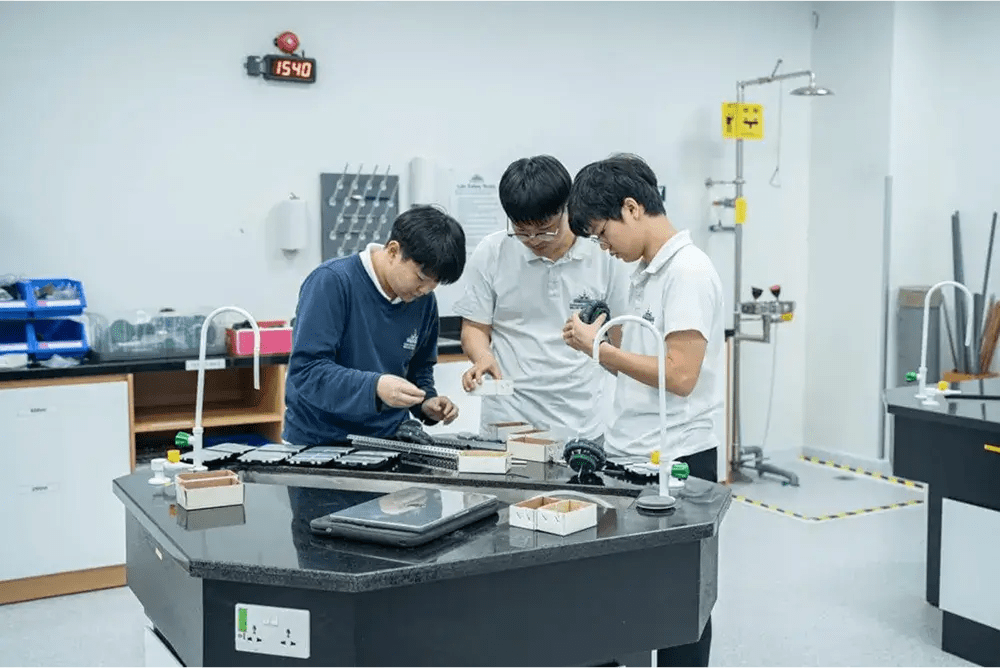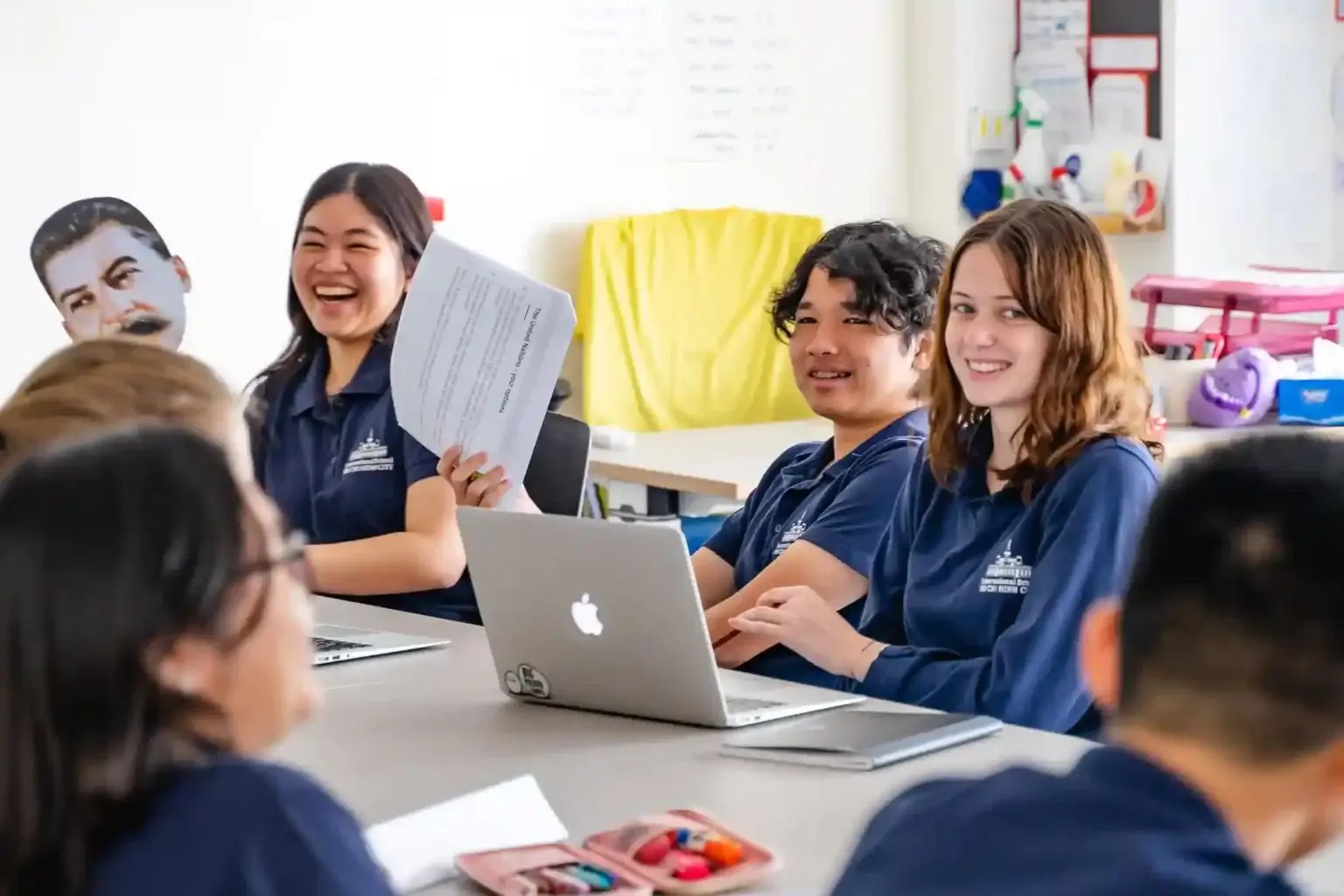Design Thinking: Building Future-Ready Skills for Our Students
When we discuss how to best prepare our students for the future, the conversation often turns to technology, global awareness, or academic rigor, and these are all essential. However, equally important is equipping students with the skills and mindset of design thinking, a human-centered approach to problem-solving that is used globally to create products and services. We also teach these skills to our students from the Primary Years Programme (PYP) all the way through the Diploma Programme (DP).
At its heart, design thinking (also known as human-centered design) is focused on the use of empathy, creativity, and iteration. Students are challenged to identify real problems, understand the people involved through empathy, generate and test ideas, and refine solutions by connecting with those same people. This is not only central to our digital design courses in MYP and DP, but it is also embedded in the design cycle within PYP, where even our youngest learners are encouraged to ask questions, understand problems, create solutions, take risks, and reflect on their process.
A PYP Story: Design Thinking in Action
Imagine a group of Grade 4 students exploring the unit of inquiry on communities. They notice that the playground has limited shaded areas, which makes it uncomfortable to play outside on hot days. Using the PYP design cycle, the students first investigate the needs of their classmates by interviewing peers and teachers. They then develop ideas for solutions, from tents made of recycled fabric to modular shade structures.
Working in groups, they create prototypes using cardboard and digital drawings. They test their models, gather feedback, and finally reflect on improvements. Even at this early stage, they are practicing empathy (listening to others), creativity (generating new ideas), resilience (refining their solutions after setbacks), and communication (presenting their proposals to the class).

This process is less about the final product and more about the thinking journey. The same design cycle they’re practicing now grows in complexity as they move from PYP to MYP and DP, where projects may involve the process for PYPx, Personal Project, and Extended Essay. And they also use the process throughout Units of Inquiry in a variety of classes.
From the Classroom to the Workplace
Many people wonder what makes design thinking so important throughout and outside of ISHCMC. It’s simple and logical. The very same skills that make for an effective designer are also the ones that drive success in the workplace. Some of the world’s leading companies, IDEO, Apple, and Google, have built their reputations by embedding design thinking into their culture.
- IDEO, the global design firm, became famous for its process of rapid prototyping and user-centered solutions. They have also consulted with many of the largest companies and organizations across the globe. Additionally, their leaders helped launch Stanford University’s celebrated d.school.
- Apple has consistently focused on creating intuitive, beautiful products by prioritizing the end-user experience. Their mission for many years was to create great products that improve people’s lives.
- Google encourages teams to embrace iteration and risk-taking through its “design sprints,” a workplace tool modeled after the design cycle.
These organizations, and many others, value employees who can empathize with users, collaborate across teams, think creatively, and respond positively to feedback. In short, they seek the very habits of mind that our ISHCMC students develop when using the design cycle.
Core Skills Students Practice Through Design Thinking

Here are some of the transferable skills our learners build as they move through PYP, MYP, and DP:
- Empathy and User Focus: Students learn to see through another’s perspective, whether it’s a classmate using an app they designed, or a community member impacted by their project. In the workplace, empathy leads to better teamwork, customer understanding, and leadership.
- Creative and Critical Thinking: Brainstorming, sketching, prototyping, and evaluating ideas all develop flexible thinking. In careers, this translates into innovation and the ability to pivot when challenges arise.
- Collaboration and Communication: Design projects rarely happen in isolation. Students share ideas, give and receive feedback, and present their solutions. These collaboration and communication skills are essential in any modern workplace.
- Resilience and Iteration: Failure is an expected part of the design process. Students learn that mistakes are not dead ends but opportunities to refine and improve. They may not even know that they’re building resilience as they overcome obstacles. This growth mindset is invaluable in the ever-changing work environments.
- Project Management and Organization: From planning timelines to managing resources, students practice structuring their work, getting more and more independence as they progress through ISHCMC. These habits mirror the project-based nature of most professional careers.
The IB Learner Profile in Design Thinking

Design thinking naturally aligns with the IB Learner Profile, helping our students grow into well-rounded individuals:
- Inquirers – Asking meaningful questions at the start of every design project.
- Thinkers – Applying critical and creative thinking to develop innovative solutions.
- Communicators – Sharing ideas clearly and confidently with peers and audiences.
- Risk-takers – Trying bold ideas and learning from failure.
- Reflective – Looking back at their work to identify improvements.
- Caring – Designing with empathy for real users and communities.
These attributes don’t just support academic growth; they nurture the kind of people who thrive in universities, workplaces, and global communities.
Looking Ahead
By the time students complete their time at ISHCMC, they are not only using many professional digital design tools and processes, but they are also thinking like designers: empathetic, adaptable, and innovative problem-solvers. Whether they create a user-friendly app, engineer a sustainable product, or design a social campaign, they are practicing the exact skills that employers (and the world) value most.
Design thinking gives our learners much more than technical skills; it gives them the experience, confidence, and creativity to possibly shape a future that doesn’t yet exist. And whether they become engineers, entrepreneurs, educators, or artists, those are skills that will last a lifetime and help lead them to success.







